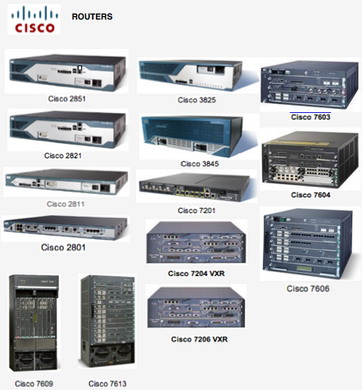Common devices used in a computer network
Let’s now look at the various components that are used in a LAN and in a WAN.
Hubs
In the old days the LAN comprised mostly of devices called hubs or a concentrator in other words.
A hub or a concentrator was a way of concentrating network connections in a single point. Hub’s ran at 10Mbps and essentially if you put 10 machines into a wire that was running a 10Mbps you would see that every machine could probably only transmit at 1Mbps even if they were transmitting at their maximum.
Hubs were shared, they were slow, they were not optimal, primarily because you had a certain number of devices that you plugged in and the performance of Ethernet would degrade to such an extent that it was preferable not to even work on the network.
Switches
Hubs then gave way to switches, the difference between a hub and a switch is that it when workstations started communicating with one another, they would essentially form a direct connection and even though other devices were connected these two workstations would talk directly to one another.
They would create a virtual connection between the two devices that were communicating with each other.
Once the conversation was complete that connection would be broken and then if a machine wanted to talk with a different workstation it would again create a virtual connection. As opposed to hubs, switches were much faster, there was less contention but they were also much more expensive.
Routers
So in the makeup of the LAN, we need something more.
We use a Router. A router is a networking device whose software and hardware are usually tailored to the tasks of routing and forwarding information. For example, on the Internet, information is directed to various paths by routers.
A device that forwards data packets along networks. A router is connected to at least two networks, commonly two LANs or WANs or a LAN and its ISP’s network. Routers are located at gateways, the places where two or more networks connect.
Very little filtering of data is done through routers.

Bridge
A device that connects two local-area networks (LANs), or two segments of the same LAN, that use the same protocol, such as Ethernet or Token-Ring.
Gateways
A node on a network that serves as an entrance to another network. In enterprises, the gateway is the computer that routes the traffic from a workstation to the outside network that is serving the Web pages. In homes, the gateway is the ISP that connects the user to the internet.
Proxy Servers
A proxy server, also known as a "proxy" or "application level gateway", is a computer that acts as a gateway between a local network (e.g., all the computers at one company or in one building) and a larger-scale network such as the Internet. Proxy servers provide increased performance and security. In some cases, they monitor employees' use of outside resources.
A proxy server works by intercepting connections between sender and receiver. All incoming data enters through one port and is forwarded to the rest of the network via another port. By blocking direct access between two networks, proxy servers make it much more difficult for hackers to get internal addresses and details of a private network.
Some proxy servers are a group of applications or servers that block common Internet services. For example, an HTTP proxy intercepts web access, and an SMTP proxy intercepts email. A proxy server uses a network addressing scheme to present one organization-wide IP address to the Internet. The server funnels all user requests to the Internet and returns responses to the appropriate users. In addition to restricting access from outside, this mechanism can prevent inside users from reaching specific Internet resources (e.g., certain web sites). A proxy server can also be one of the components of a firewall.
Proxies may also cache web pages. Each time an internal user requests a URL from outside, a temporary copy is stored locally. The next time an internal user requests the same URL, the proxy can serve the local copy instead of retrieving the original across the network, improving performance.




